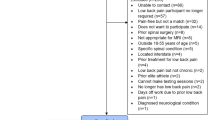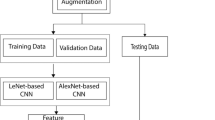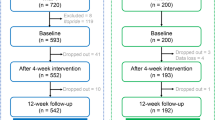Abstract
This study was to explore the value of data mining model in evaluating the treatment effect of acupuncture on patients with cervical spondylosis (CS) and neck pain. A total of 270 patients with CS and neck pain recruited in the acupuncture clinic of Shanxi Provincial People’s Hospital were selected as the research objects in this study and were divided into an acupuncture needle group (group A), an acupoint latent acupuncture group (group B), and a puncture bloodletting group (group C) randomly, with 90 cases in each group. The Northwick Park Questionnaire (NPQ), McGill Pain Questionnaire (MPQ), and Role-Physical (RP), Physiological Function (PF), General Health (GH), and Body Pain (BP) of all patients were recorded before treatment, at the completion of the fifth acupuncture, at the end of treatment, one-month follow-up, two-month follow-up, and three-month follow-up to analyse the clinical treatment effect. Based on the artificial neural network (ANN) algorithm, a curative effect evaluation method and data mining model was further established to compare the accuracy rate of data processing by different data models, and the data processed by the data mining model were compared with the clinical data to analyse the feasibility of the data mining model. The test results found that the NPQ and MPQ values of patients in group B were significantly lower than those in groups A and C (P < 0.05). At the end of treatment, the PF and BP values of patients in groups B and C were significantly higher than those of group A (P < 0.05). The RP value of patients in group B was significantly higher than that in groups A and C after treatment and during follow-up (P < 0.05). The GH value of patients in group B was significantly higher than that in groups A and C (P < 0.05). The clinical treatment efficiency in group B was significantly higher than that in the other two groups (P < 0.05). Different sample sizes of decision tree (DT-1), clustering algorithm (CA-1), and support vector machines (SVM-1) had no effect on the accuracy rate of efficacy judgement of the model. Moreover, the accuracy rate of DT-2, CA-2, and SVM-2 using the neighbourhood learning algorithm increased as increase of the sample size. The correct rate of treatment efficiency judgement of the SVM model and the data mining model reached the maximum value of 81.48% and 82.64%, respectively. It suggested that the data mining model based on the ANN algorithm could accurately estimate and evaluate the overall efficacy data of patients with CS and neck pain.








Similar content being viewed by others
References
Ding J, Zhou D, Pan L (2020) Cervical spondylotic internal jugular venous compression syndrome. CNS Neurosci Ther 26(1):47–54
Ricciardi L, Scerrati A, Olivi A et al (2020) The role of cervical collar in functional restoration and fusion after anterior cervical discectomy and fusion without plating on single or double levels: a systematic review and meta-analysis. Eur Spine J 29(5):955–960
Bernabeusanz A, Mollatorro JV, Lopezcelada S (2020) MRI evidence of brain atrophy, white matter damage, and functional adaptive changes in patients with cervical spondylosis and prolonged spinal cord compression. Eur Radiol 30(1):357–369
Gu T, Lin L, Jiang Y et al (2018) Acupuncture therapy in treating migraine: results of a magnetic resonance spectroscopy imaging study. J Pain Res 11:889–900
He B, Li Y, Gui T et al (2018) Preliminary clinical evaluation of acupuncture therapy in patients with postpartum sciatica. J Midwifery Womens Health 63(2):214–220
Islas MA, Rubio JDJ, Muñiz S et al (2021) A fuzzy logic model for hourly electrical power demand modeling. Electronics 10(4):448
Furlán F, Rubio E, Sossa H (2020) CNN based detectors on planetary environments: a performance evaluation. Front Neurorobot 14:85
Chiang HS, Chen MY, Huang YJ (2019) Wavelet-based EEG processing for epilepsy detection using fuzzy entropy and associative petri net. IEEE Access 7:103255–103262
Yi J, Han HS (2020) Bow Hunter’s syndrome caused by bilateral dynamic occlusion of the subaxial vertebral arteries during neck extension. J Korean Orthop Assoc 55(1):85–89
Alshehri M, Sharma P, Sharma R, Alfarraj O (2021) Motion-based activities monitoring through biometric sensors using genetic algorithm. Comput Mater Contin 66(3):2525–2538
Kiran JS, Rao MN, Pasha SA (2020) Pattern recognition approach and clinico-radiological evaluation of compressive myelopathies at a tertiary care hospital. J Med Res 8(1):24–30
Yu J, Zhu C, Zhang J et al (2020) Spatial pyramid-enhanced NetVLAD with weighted triplet loss for place recognition. IEEE Trans Neural Netw 31(2):661–674
Meda-Campaña JA (2018) On the estimation and control of nonlinear systems with parametric uncertainties and noisy outputs. IEEE Access 6:31968–31973
de Jesús Rubio J (2009) SOFMLS: online self-organizing fuzzy modified least-squares network. IEEE Trans Fuzzy Syst 17(6):1296–1309
Sharma P, Alshehri M, Sharma R, Alfarraj O (2021) Self-management of low back pain using neural network. Comput Mater Contin 66(1):885–901
Singh SJ, Harsha SP (2020) Nonlinear vibration analysis of sigmoid functionally graded sandwich plate with ceramic-FGM-metal layers. J Vib Eng 8(1):67–84
Bui X, Nguyen H, Le H (2020) Prediction of blast-induced air over-pressure in open-pit mine: assessment of different artificial intelligence techniques. Nat Resour Res 29(2):1–21
Eitel A, Hauff N, Burgard W (2020) Learning to singulate objects using a push proposal network. In: Robotics research, pp 405–419
Martínez-Vázquez JM, Valcarce DG, Riesco MF et al (2019) Artificial neural network (ANN) as a tool to reduce human–animal interaction improves senegalese sole production. Biomolecules 9(12):778
Aractingi S, Pellacani G (2019) Computational neural network in melanocytic lesions diagnosis: artificial intelligence to improve diagnosis in dermatology? Eur J Dermatol 29(S1):4–7
Marinucci D, Sbrollini A, Marcantoni I et al (2020) Artificial neural network for atrial fibrillation identification in portable devices. Sensors (Basel) 20(12):3570
Rowe CA, Sirois FM, Toussaint L (2019) Health beliefs, attitudes, and health-related quality of life in persons with fibromyalgia: mediating role of treatment adherence. Psychol Health Med 24(8):962–977
Abdul Aziz FAB, Abd Rahman N, Mohd Ali J et al (2019) tropospheric ozone formation estimation in urban city, Bangi, using artificial neural network (ANN). Comput Intell Neurosci 2019:6252983
Dworkin RH, Turk DC, Trudeau JJ (2015) Validation of the Short-Form McGill Pain Questionnaire-2 (SF-MPQ-2) in acute low back pain. J Pain 16(4):357–366
Amini P, Ahmadinia H, Amiri MM (2016) Evaluating the high risk groups for suicide: a comparison of logistic regression, support vector machine, decision tree and artificial neural network. Iran J Public Health 45(9):1179
Kerfeld CI, Jirikowic T, Allyn KJ (2018) Participation in active play of children who use lower extremity prostheses: an exploratory questionnaire. Prosthet Orthot Int 42(4):437–445
Arendas K, Foster WG, Leyland N (2015) Impact of surgical excision of deep infiltrating bowel endometriosis on health-related quality of life: review of current literature. J Endometr Pelvic Pain Disord 7(1):3–9
Witt CM, Vertosick E, Foster NE (2019) The effect of patient characteristics on acupuncture treatment outcomes: an individual patient data meta-analysis of 20,827 chronic pain patients in randomized controlled trials. Clin J Pain 35(5):428–434
Lo YL, Zhu L (2020) Intraoperative motor evoked potential improvement in cervical spondylotic myelopathy: comparison of cortical stimulation parameters. J Clin Neurol 16(1):102–107
Yi Y, Xu H, Zhang S (2020) Does the C3/4 disc play a role in cervical spondylosis with dizziness? A retrospective study. Int Orthop 44(6):1159–1168
Sanchez MG, Cachero C, Melia S (2019) Evaluating the effect of developers’ personality and productivity on their intention to use model-driven web engineering techniques: an exploratory observational study. J Web Eng 17(6):483–526
Feng Z, Zhu Y (2016) A survey on trajectory data mining: techniques and applications. IEEE Access. 4:2056–2067
Turvill J, Turnock D, Holmes H et al (2018) Evaluation of the clinical and cost-effectiveness of the York Faecal Calprotectin care pathway. Frontline Gastroenterol 9(4):285–294
Joshi A, Sharma P, Joshi C (2019) Club foot correction by Ponseti’s method, its functional effectiveness and clinical evaluation: a prospective study. Int J Orthop Sci. 5:164–168
Chen J, Wang Z, Tu Y (2018) Regional homogeneity and multivariate pattern analysis of cervical spondylosis neck pain and the modulation effect of treatment. Front Neurosci 12:900
Seo SY, Lee K, Shin J (2017) Effectiveness of acupuncture and electroacupuncture for chronic neck pain: a systematic review and meta-analysis. Am J Chin Med 45(8):1573–1595
Lin D (2017) Research on the information construction of accounting audit based on the big data of computer. Int J Inf Technol Web Eng 12(3):74–82
Chen M, Gong D (2019) Discrimination of breast tumors in ultrasonic images using an ensemble classifier based on TensorFlow framework with feature selection. J Investig Med 67(Suppl 1):A3. https://doi.org/10.1136/jim-2019-000994.9
Brock VF, Khan HU (2017) Big data analytics: does organizational factor matters impact technology acceptance. J Big Data 4(1):1–28
Author information
Authors and Affiliations
Corresponding author
Additional information
Publisher's Note
Springer Nature remains neutral with regard to jurisdictional claims in published maps and institutional affiliations.
Rights and permissions
About this article
Cite this article
Huo, H., Chang, Y. & Tang, Y. Analysis of treatment effect of acupuncture on cervical spondylosis and neck pain with the data mining technology under deep learning. J Supercomput 78, 5547–5564 (2022). https://doi.org/10.1007/s11227-021-03959-2
Accepted:
Published:
Issue Date:
DOI: https://doi.org/10.1007/s11227-021-03959-2




